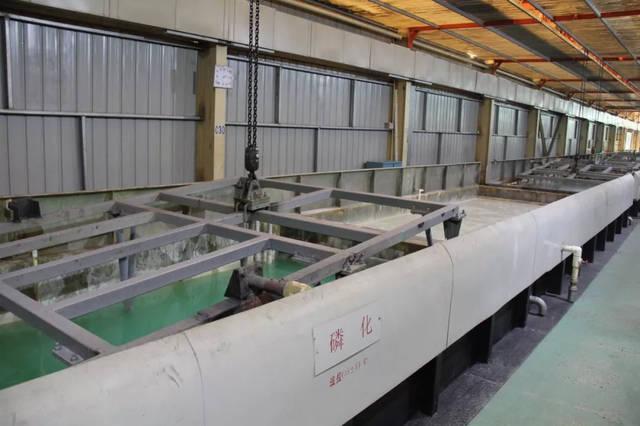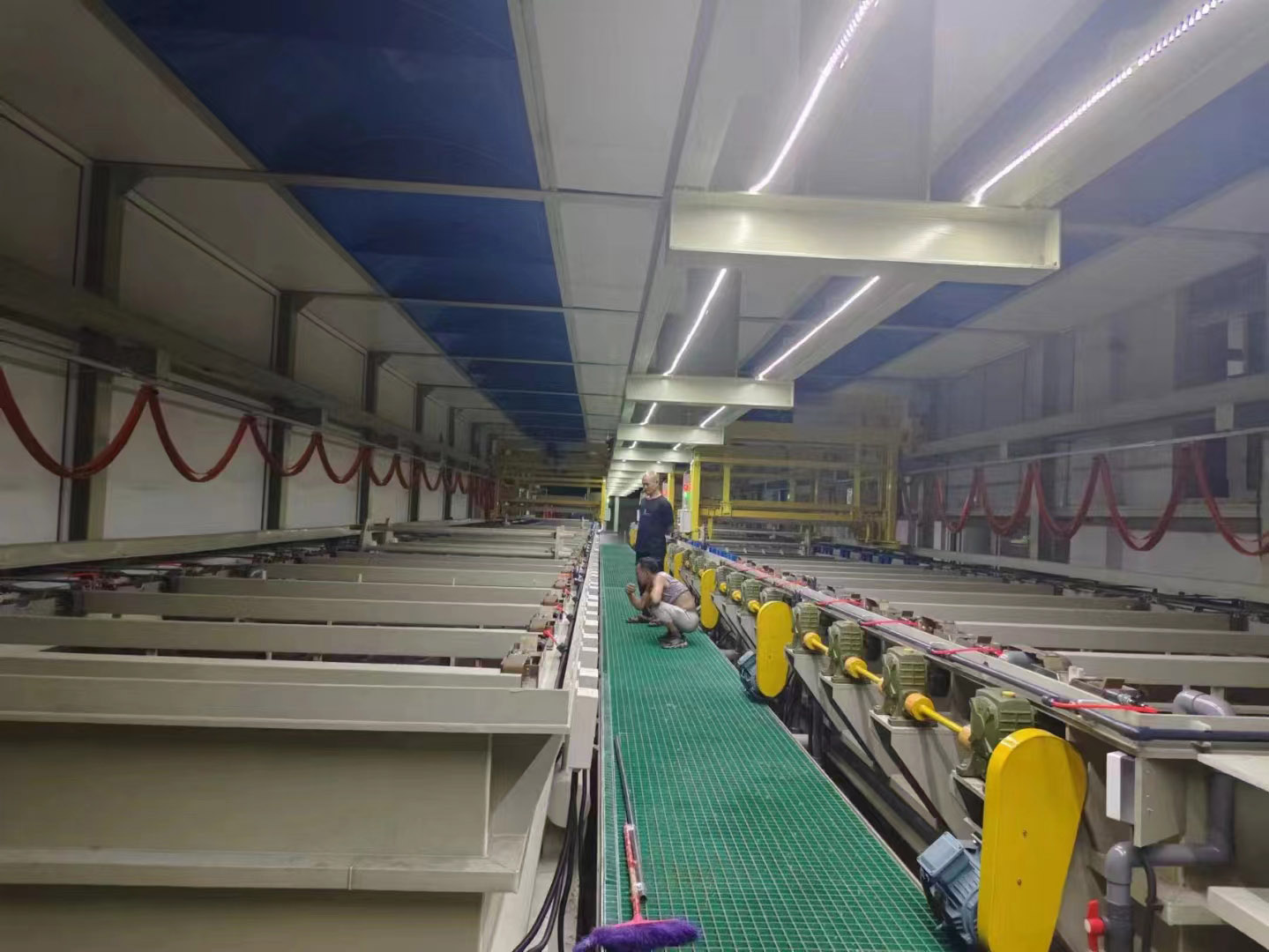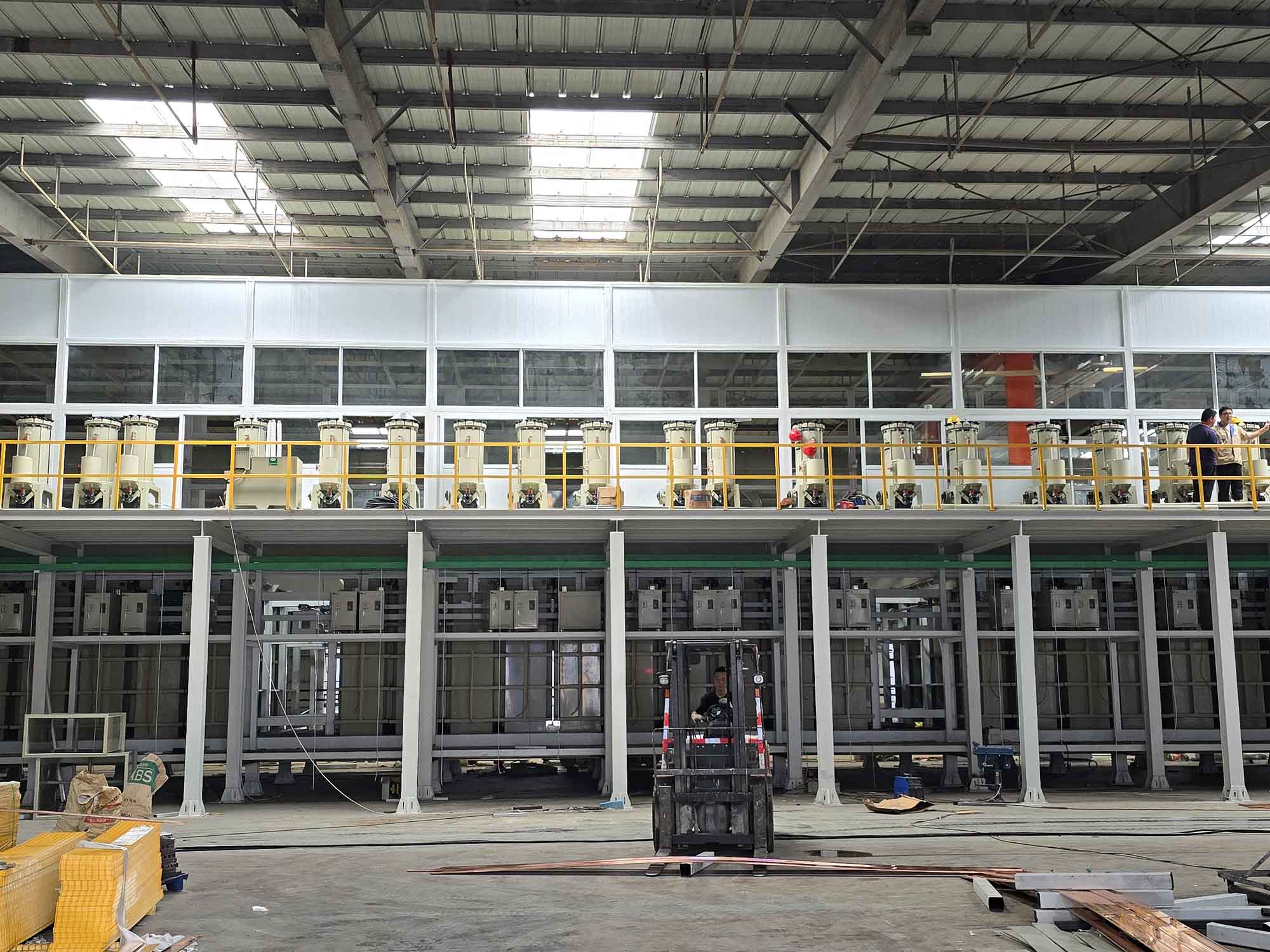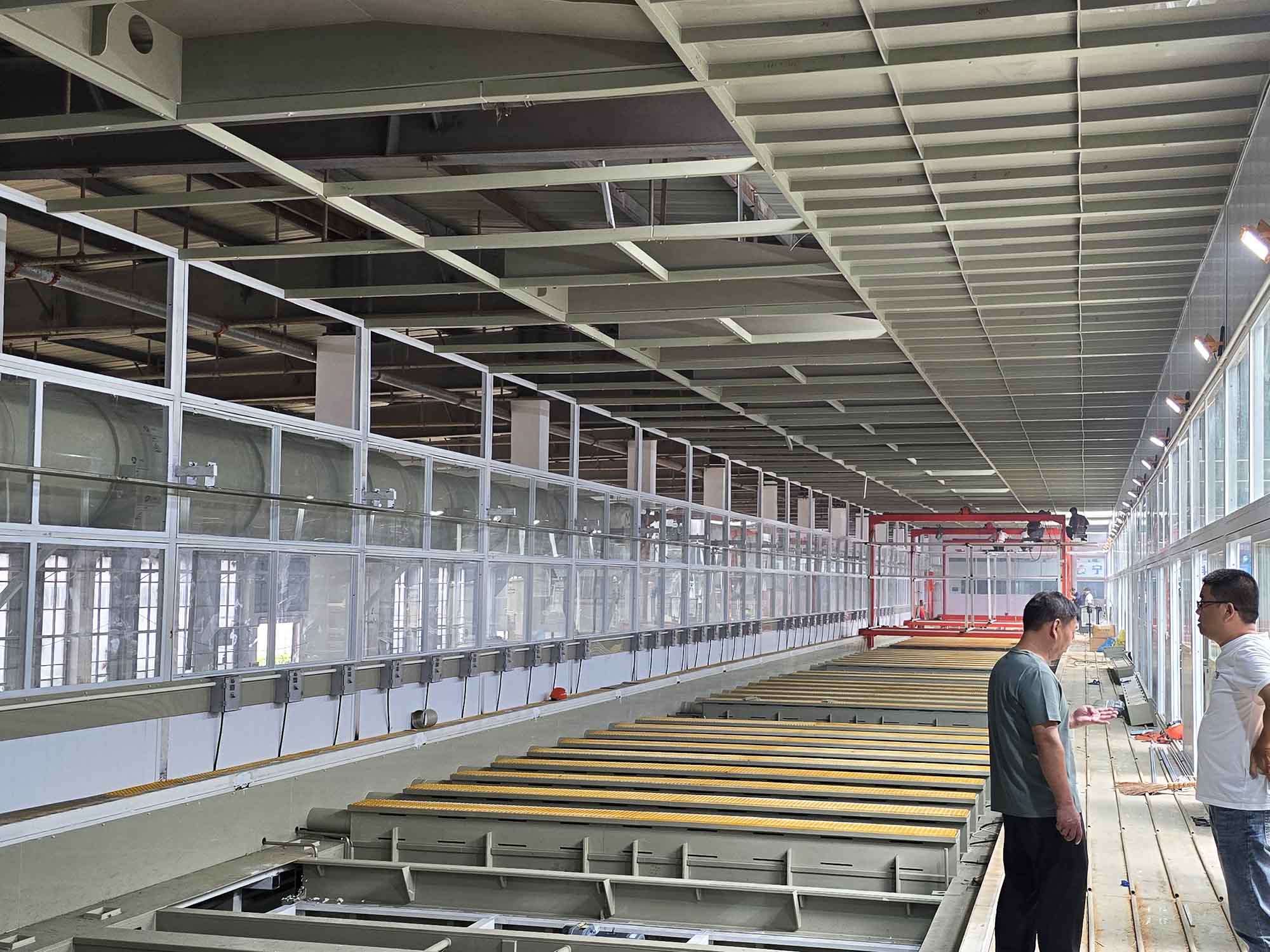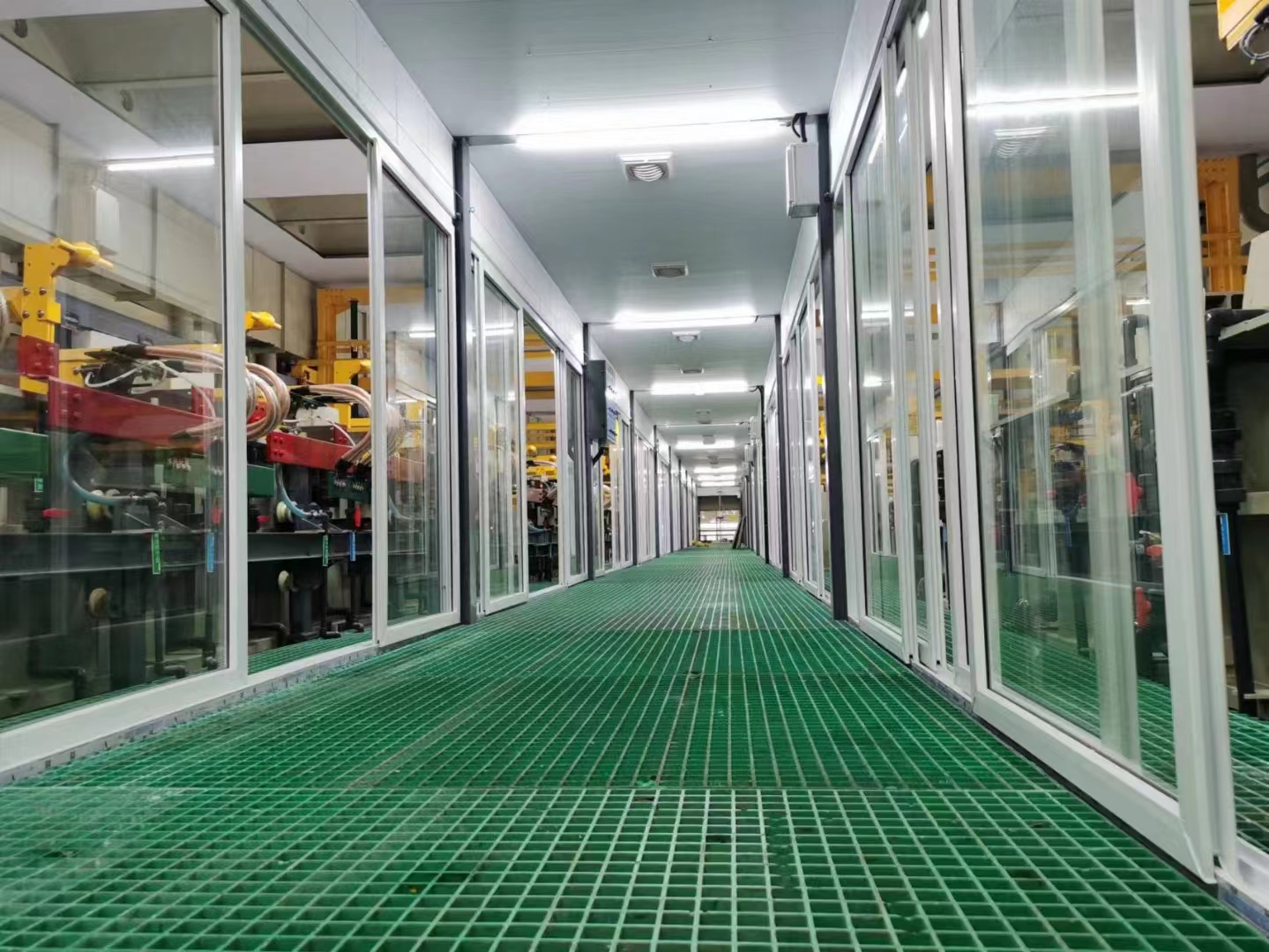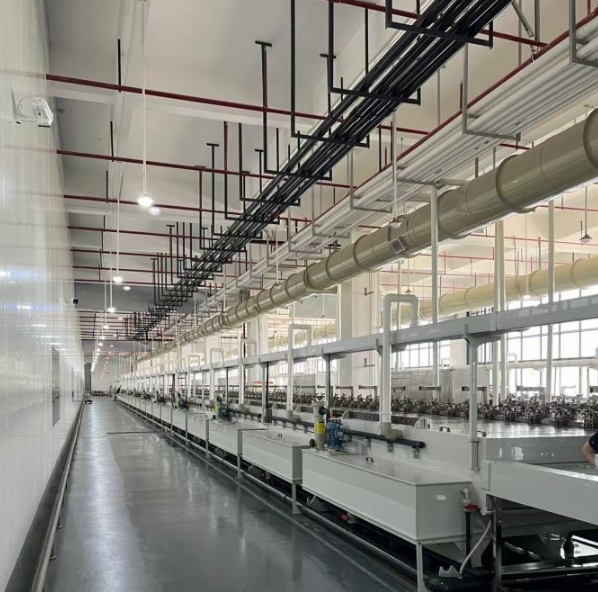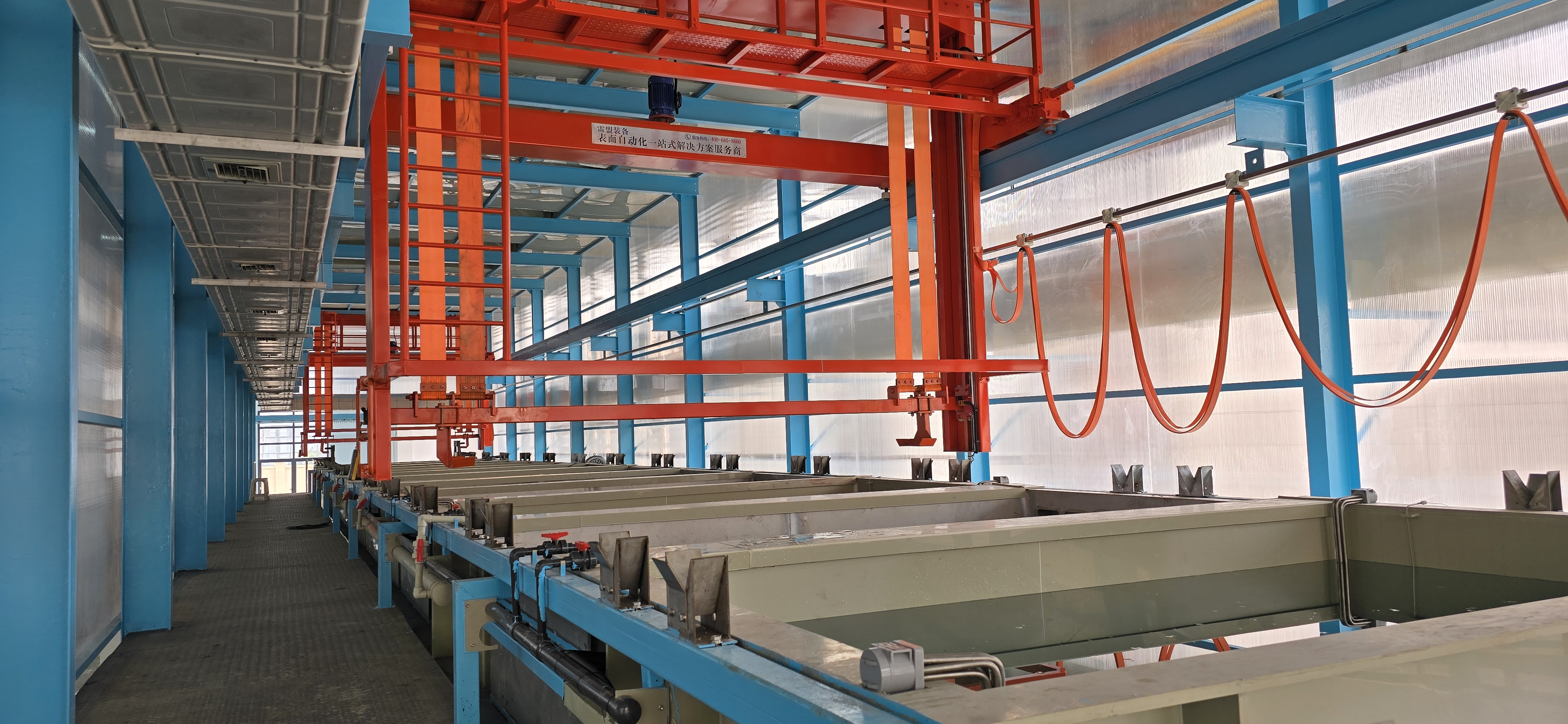Equipment introduction
Raymond Pickling and Phosphating Equipment - Surface Treatment Solutions
Raymond Pickling and Phosphating Equipment
Surface Treatment Solutions · Corrosion Protection · Superior Adhesion
Product Introduction
The Raymond Pickling and Phosphating Equipment is a comprehensive surface treatment solution designed to prepare metal surfaces for subsequent coating processes while providing excellent corrosion protection. This advanced system combines acid pickling for scale and oxide removal with phosphating for enhanced paint adhesion and corrosion resistance. Our equipment is essential for automotive, appliance, construction, and general manufacturing industries where superior surface preparation and long-lasting protective coatings are critical for product performance and durability.
At Raymond, we integrate global best practices and innovative technologies from leading manufacturers in Europe, USA, Japan, and Korea to deliver superior pickling and phosphating solutions. Our equipment is engineered for optimal performance, reliability, and environmental compliance, featuring precise control over chemical concentrations, temperature, and processing time. We focus on providing systems that not only achieve exceptional surface quality but also minimize chemical consumption, reduce waste generation, and ensure compliance with stringent environmental regulations. Partner with Raymond for a robust and efficient pickling and phosphating solution that enhances your product quality and strengthens your competitive position in the market.
Core Advantages of Raymond Pickling and Phosphating Equipment
- Superior Surface Preparation: Our advanced pickling process effectively removes mill scale, rust, and oxides, creating an ideal surface for subsequent phosphating and coating applications.
- Enhanced Corrosion Protection: The phosphating process creates a protective crystalline coating that significantly improves corrosion resistance and extends product lifespan.
- Excellent Paint Adhesion: Phosphate coatings provide an ideal surface for paint and powder coating adhesion, resulting in superior finish quality and durability.
- Automated Process Control: Integrated PLC and HMI systems provide real-time monitoring and precise control of all critical parameters, ensuring consistent quality and operational efficiency.
- Environmental Compliance: Features advanced waste treatment systems, chemical recovery, and emission control to meet stringent environmental regulations.
- Energy Efficient Design: Optimized heating systems and heat recovery mechanisms minimize energy consumption and reduce operational costs.
- Flexible Configuration: Modular design allows for customization to meet specific production requirements and space constraints.
- Comprehensive Safety Features: Incorporates advanced safety systems including emergency shutdown, chemical leak detection, and operator protection measures.
Process Flow
The Raymond Pickling and Phosphating Equipment employs a systematic multi-stage process to achieve optimal surface treatment results.
1
Pre-cleaning
Parts are degreased and cleaned to remove oils, dirt, and organic contaminants using alkaline cleaning solutions.
2
Water Rinse
Thorough rinsing removes cleaning residues and prepares the surface for the pickling process.
3
Acid Pickling
Controlled acid treatment removes mill scale, rust, and oxides, creating a clean, active metal surface. Common acids include hydrochloric acid (HCl) or sulfuric acid (H2SO4).
4
Acid Rinse
Multiple rinse stages remove acid residues and neutralize the surface pH.
5
Surface Conditioning
Optional conditioning stage optimizes the surface for phosphate crystal formation and improves coating uniformity.
6
Phosphating
Application of phosphate solution creates a protective crystalline coating that enhances corrosion resistance and paint adhesion.
7
Final Rinse
Final rinse removes excess phosphate solution and prepares the surface for drying or subsequent coating processes.
8
Drying
Controlled drying process removes moisture and stabilizes the phosphate coating for optimal performance.
Technical Specifications
Raymond Pickling and Phosphating Equipment is engineered for superior performance, reliability, and environmental compliance, incorporating advanced features inspired by global industry leaders.
| Technical Parameter |
Specification Range |
| Equipment Type |
Fully Automatic Pickling and Phosphating Line |
| Processing Capacity |
100 - 5000 m²/hour (customizable) |
| Tank Material |
Polypropylene (PP), PVC, FRP, or Acid-resistant Steel |
| Pickling Acids |
Hydrochloric Acid (HCl), Sulfuric Acid (H2SO4), Nitric Acid (HNO3) |
| Phosphate Types |
Zinc Phosphate, Iron Phosphate, Manganese Phosphate |
| Temperature Control |
Automatic Heating/Cooling System (20-80°C) |
| pH Control |
Automatic pH monitoring and adjustment (±0.1 pH units) |
| Concentration Control |
Automatic chemical dosing and concentration monitoring |
| Control System |
Advanced PLC Control (Siemens, Mitsubishi), HMI Touchscreen, SCADA Integration |
| Conveyor System |
Overhead Conveyor, Monorail, or Immersion Systems |
| Heating System |
Steam, Electric, or Gas Heating with Heat Recovery |
| Waste Treatment |
Integrated neutralization, precipitation, and filtration systems |
| Environmental Systems |
Fume extraction, scrubbing systems, chemical recovery |
| Safety Features |
Emergency stop, chemical leak detection, safety showers, eye wash stations |
| Automation Level |
Fully Automated Process Control, Chemical Management, and Quality Monitoring |
Solving Customer Pain Points
The Raymond Pickling and Phosphating Equipment is designed to effectively address critical challenges faced by manufacturers requiring superior surface treatment.
Challenge: Poor Paint Adhesion and Coating Failures
Our Solution: Our systematic pickling and phosphating process creates an ideal surface for paint adhesion, significantly reducing coating failures and improving product quality and durability.
Challenge: Corrosion and Premature Product Failure
Our Solution: The phosphate coating provides excellent corrosion protection, extending product lifespan and reducing warranty claims and customer complaints.
Challenge: Inconsistent Surface Quality and Process Variability
Our Solution: Automated process control and real-time monitoring ensure consistent surface quality and eliminate process variability, improving overall product reliability.
Challenge: Environmental Compliance and Waste Management
Our Solution: Integrated waste treatment systems and chemical recovery minimize environmental impact and ensure compliance with stringent environmental regulations.
Challenge: High Chemical Consumption and Operating Costs
Our Solution: Optimized chemical management, recovery systems, and energy-efficient design significantly reduce chemical consumption and operating costs.
Challenge: Safety Risks and Operator Exposure
Our Solution: Comprehensive safety features, automated handling, and advanced ventilation systems minimize operator exposure and ensure a safe working environment.
Related Keywords: pickling equipment, phosphating equipment, surface treatment, corrosion protection, paint adhesion, metal pretreatment, Raymond surface solutions, acid pickling, phosphate coating, metal finishing.
Pickling and phosphating equipment is a kind of equipment widely used in the process of metal surface treatment, which is mainly used for descaling, degreasing and phosphating the metal surface to improve the adhesion, corrosion resistance and decorative properties of the metal surface. The following is a detailed introduction of pickling and phosphating equipment:
I. Equipment Overview
Pickling and phosphating equipment usually consists of pickling tanks, phosphating tanks, washing tanks, drying equipment, etc. to form a complete production line. The equipment removes rust, oil and other impurities on the metal surface by chemical reaction, and forms a dense phosphate film on the metal surface, thus improving the performance of the metal surface.
II. Working Principle
1. Acid washing process: metal parts are immersed into the acid washing tank, and the corrosive effect of acid is used to remove the rust and oxidized skin on the metal surface. The type and concentration of pickling solution are selected according to the type of metal and the degree of corrosion. 2.
2. Washing process: After pickling, the metal parts must be washed several times to completely remove the residual acid to prevent the subsequent phosphating process from being affected.
3. Phosphating process: The washed metal parts are immersed into the phosphating tank to form a layer of phosphate film on the metal surface by chemical reaction. The main component of the phosphate film is phosphate, which has good adhesion and corrosion resistance.
4. Drying process: After phosphating, the metal parts need to be dried to remove the surface moisture and improve the strength and stability of the phosphate film.
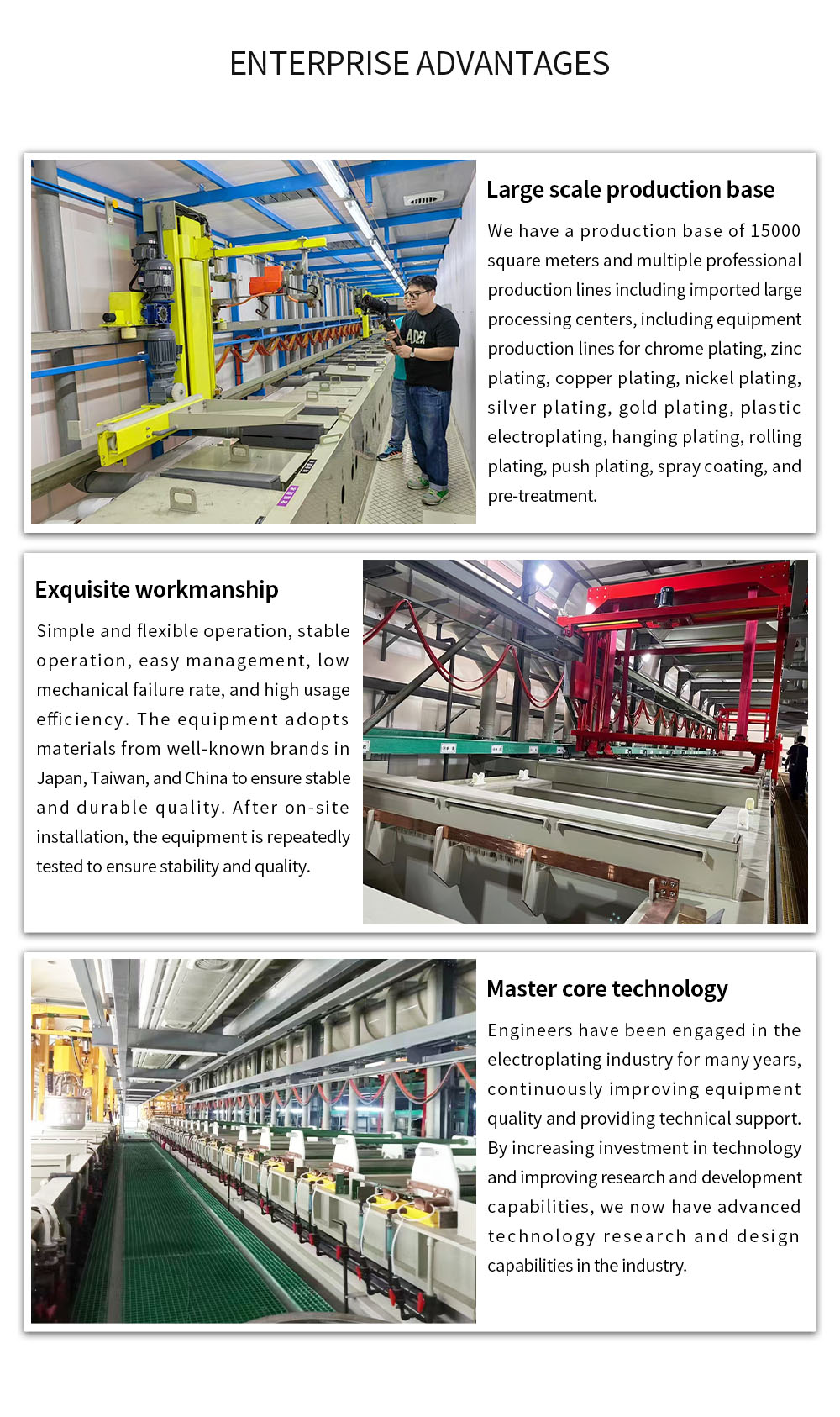
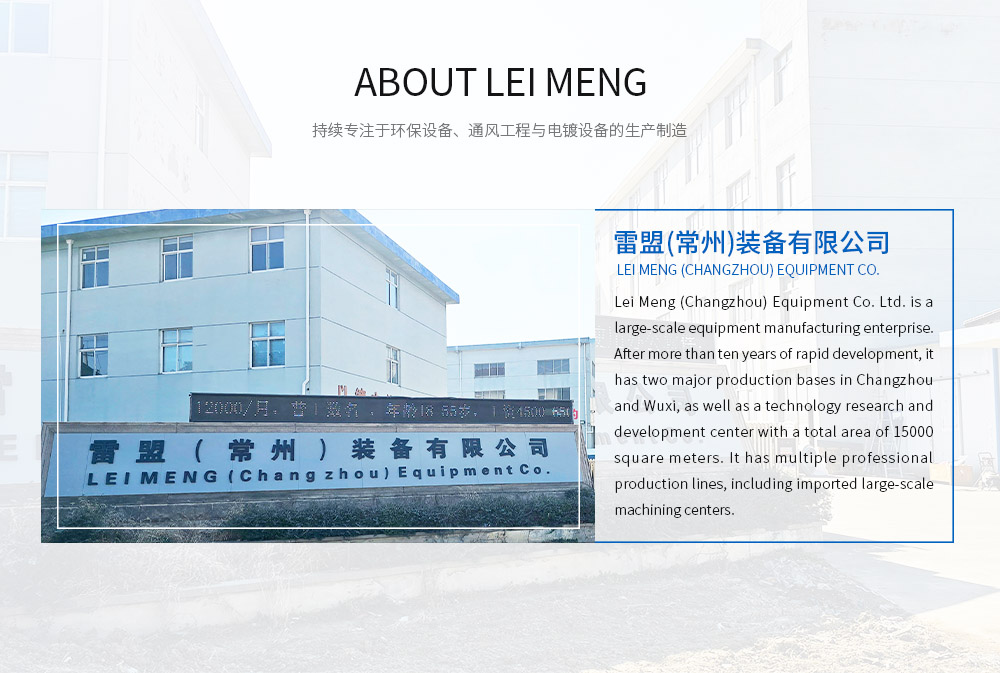
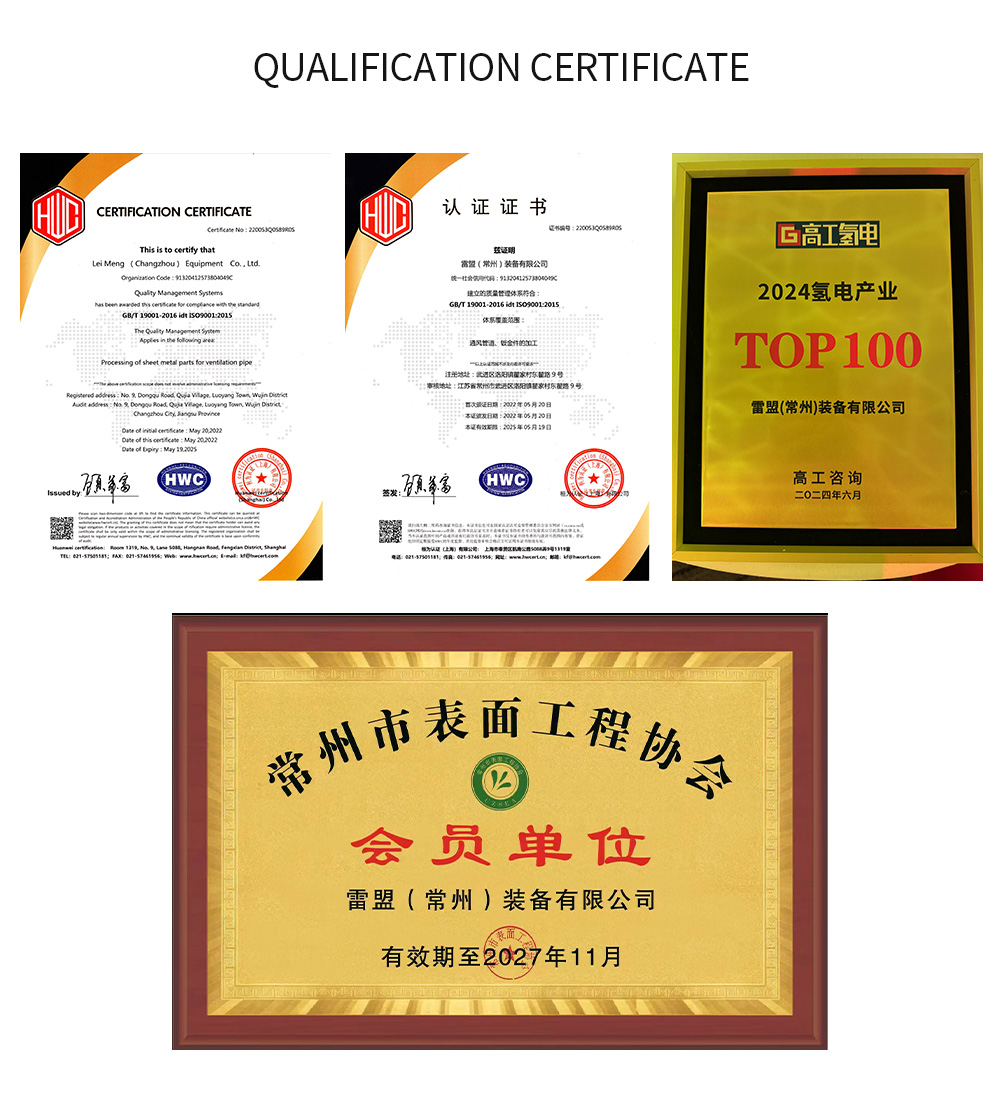
Large scale production base
Lei Meng Equipment have a production base of 15000 square meters and multiple professional production lines including imported large processing centers,including equipment production lines for chrome plating, zinc plating, copper plating, nickel plating,silver plating, gold plating, plastic electroplating, hanging plating, rolling plating, push plating, spray coating, and pre-treatment.
Exquisite workmanship
Simple and flexible operation, stable operation,easy management,low mechanical failure rate, and high usage efficiency.The equipment adopts materials from well-known brands in Japan,Taiwan and China to ensure stable and durable quality.After on-site installation, the equipment is repeatedly tested to ensure stability and quality.
Master core technology
Engineers have been engaged in the electroplating industry for many years,continuously improving equipment quality and providing technical support.By increasing investment in technology and improving research and development capabilities, we now have advanced technology research and design capabilities in the industry
Lei Meng (Changzhou) Equipment Co. Ltd. is a large-scale equipment manufacturing enterprise.After more than ten years of rapid development, ithas two major production bases in Changzhou and Wuxi, as well as a technology research and development center with a total area of 15000 square meters. lt has multiple professional production lines, including imported large-scale machining centers.
